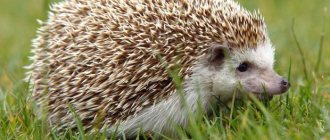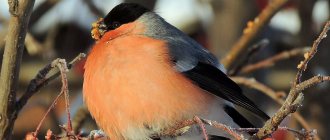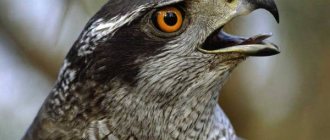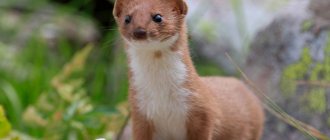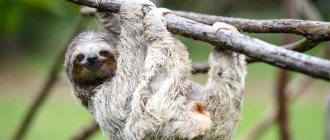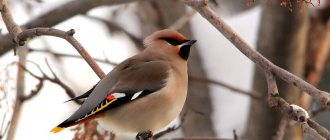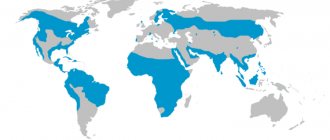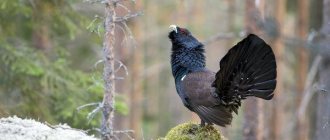- Wild animals
- >>
- Reptiles
The saltwater crocodile gets its name from the presence of ridges in the eyeball area. With age they increase in size and number. The saltwater crocodile, or saltwater crocodile, is one of the most ancient species of reptiles on Earth. Its size and appearance are simply amazing and instill wild fear and horror. It is one of the most powerful and largest predators, surpassing even the polar bear in size and strength.
Origin of the species and description
Photo: Saltwater crocodile
Saltwater crocodiles belong to the reptiles and are representatives of the order of crocodiles, the family and genus of true crocodiles, classified as the saltwater crocodile. This type of reptile is considered one of the oldest living creatures on the planet. According to scientists, they descended from crocodile morphoeusuchians.
These creatures lived in bodies of water near the continent of Gondwana about 100 million years ago. Surprisingly, they managed to survive the Cretaceous-Paleogene extinction period. The remains of an ancient reptile have been discovered in western Queensland. Judging by historical data, there was once a sea in this territory. Skeletal remains indicate that the reptile of those times was capable of performing deadly rotations.
Scientists cannot name the specific period of occurrence of the saltwater crocodile as a separate species. The oldest remains of saltwater crocodiles are about 4.5 - 5 million years old. In terms of external features, saltwater crocodiles have much in common with Philippine, New Guinea or Australian crocodiles. But comparison at the genetic level shows similarities with Asian reptile species.
Mississippi alligator
Length: 3.4 m, weight: 340 kg
The Mississippi alligator is a predator; its diet mainly consists of fish, but sometimes it also attacks other animals. The reptile lives in three American states: Florida, Mississippi and Louisiana.
Currently, crocodile is bred by farmers for its meat and skin. Most males, when grown, reach up to 3.5 m in height and about 300 kg. weight.
Males use infrasound to attract females during the breeding season. Reptile hunting has greatly affected the population of the Mississippi crocodile, and it was once listed as an endangered species.
Appearance and features
Photo: Saltwater crocodile Red Book
The appearance of a dangerous and powerful reptile is striking and inspiring. The body length of an adult reaches six meters. Body weight 750 – 900 kilograms.
Interesting! The weight of one head of some large males reaches two tons! Reptiles exhibit sexual dimorphism. Females are significantly smaller and lighter than males. The body weight of female individuals is almost half that, and the body length does not exceed 3 meters.
The body is flat and voluminous, smoothly flowing into a huge tail. Its length is more than half the length of the body. The heavy body is supported by short, powerful legs. Because of this, saltwater crocodiles were classified as alligators for a very long period of time. However, after research, they were moved to the family and species of real crocodiles.
Video: Saltwater crocodile
Crocodiles have an elongated snout with huge, powerful jaws. They are incredibly strong and have 64-68 sharp teeth. No one can open their closed jaws anymore. The head has small, high-set eyes and two rows of ridges that run from the eyes to the tip of the nose.
The area of the back and abdomen is covered with scales, which do not ossify with age, as in representatives of other species. Skin color is brown or dark green with an olive tint. This color allows you to remain unnoticed when in ambush during a hunt. Juveniles have a lighter, yellowish color with dark stripes and spots located throughout the body.
By the age of 6-10 years, the color of reptiles acquires a much darker color. With age, spots and stripes become less pronounced and bright, but never completely disappear. The underbelly and limbs are very light, almost yellow. The inner surface of the tail is gray with dark stripes.
Reptiles have excellent eyesight. They see perfectly both in water and on land, at a great distance. When in water, the eyes are covered with a special protective film. Saltwater crocodiles are endowed with excellent hearing, thanks to which they react to the slightest, barely audible rustles. The saltwater crocodile's body is equipped with special glands that cleanse it of excess salt. Thanks to this, it can live not only in fresh, but also in salty sea waters.
Where does the saltwater crocodile live?
Photo: Great saltwater crocodile
Today, the habitat of saltwater crocodiles has been significantly reduced.
Saltwater crocodile habitat:
- Indonesia;
- Vietnam;
- Eastern regions of India;
- New Guinea;
- Australia;
- Philippines;
- Southeast Asia;
- Japan (single individuals).
Most predators are concentrated in the waters of the Indian and Pacific Oceans, and in the northern regions of Australia. This type of crocodiles is distinguished by its ability to swim well and overcome long distances. Thanks to this ability, they can even swim into the open ocean and live there for a month or more. Males tend to cover distances of up to a thousand kilometers; females can swim half that distance. They can feel comfortable in small bodies of water. They can adapt to living in bodies of fresh and salt water.
The ideal habitat is considered to be quiet, calm and deep-water places, savannas, flat areas with high vegetation, as well as the mouths of rivers and the sea coast. When reptiles find themselves in open water spaces of seas or oceans, they prefer to swim with the flow rather than actively move around.
Most of these powerful and predatory reptiles prefer warm climates and small water sources - swamps and river mouths. With the onset of severe drought, they descend down to the very mouth of the rivers.
Gomek (5.42 m)
Gomek is a saltwater crocodile caught by George Craig in Papua New Guinea. In 1985, the reptile was sold to the family of Terry and Arthur Jones in Florida. And then the owners resold the pet to the St. Augustine Alligator Farm Zoological Park.
View this post on Instagram
A post shared by Victor Ray (@v1cr4v)
Gomek amazed visitors with his amazing tolerance towards people and his ability to toss food before swallowing it. It was considered almost tame. On March 6, 1997, the “good-natured slave” died from natural aging and developing heart problems. Alas, reptiles get sick too. His height at the time of death was 5.42 m, and his weight was 860 kg. Gomek is believed to be between 60 and 80 years old.
What does the saltwater crocodile eat?
Photo: Saltwater crocodile
Saltwater crocodiles are the most powerful, treacherous and very dangerous predator. It occupies the highest level in the food chain. The basis of the diet is meat, which such a powerful and large animal requires in large quantities. The animal eats only fresh meat. He will never eat carrion, except when he is in a weak state. Juveniles and females can eat large insects and small, even invertebrate animals. Large, young males require much larger and larger prey.
The basis of the diet of the saltwater crocodile is:
- wildebeest;
- African buffalos;
- turtles;
- wild boars;
- sharks and especially large fish;
- deer;
- tapirs;
- kangaroo;
- leopards;
- the Bears;
- pythons.
In the animal world, saltwater crocodiles are considered particularly cruel predators. They eat everything, not even disdaining people and other crocodiles, including representatives of their own species, only younger and smaller ones. They have no equal in hunting skills. Crocodiles can lie in ambush for a long time in water or thickets of vegetation.
When the prey is within reach, the predator rushes at it with a lightning-fast jerk and closes its jaws in a death grip. It is inherent in them not to kill, but while holding the victim, rotate around the axis of their body and tear off pieces. A crocodile can swallow a piece at once that weighs half its body weight.
At first glance, the crocodile seems like a clumsy and clumsy animal. However, this is a deep misconception. It easily overcomes obstacles and can climb steep, rocky shores and slippery stones while hunting. While pursuing prey in water, it reaches speeds of up to 35 km/h.
A large amount of food eaten is processed into adipose tissue. It helps the reptile easily tolerate the absence of a food source. With a sufficient amount of adipose tissue, some individuals can easily exist without food for several months to a year. Predators have stones in their stomachs that help grind pieces of meat that they swallow whole.
Nutrition
It is not difficult for a predator to quickly attack unsuspecting prey and capture it with its powerful jaws. By turning, spinning and striking the victim, the reptile manages to break off huge pieces of meat and swallow them whole.
Internal structure of a crocodile
The diet of this predator includes a wide variety of food. Young crocodiles' favorite delicacies are fish, amphibians, large insects, and crustaceans. Adults will no longer be satisfied with such food.
Their appetite is growing. Adult saltwater crocodiles eat more serious food. Antelopes, monkeys, livestock, birds, and sometimes people become their victims. Sometimes they can eat a snake, crab or turtle.
In very difficult times, large saltwater crocodiles can eat carrion, but this happens extremely rarely because they prefer fresh, live food.
Features of character and lifestyle
Photo: Saltwater crocodile from the Red Book
Saltwater crocodiles are the most dangerous, cunning and intelligent predators. In terms of strength, power and cunning, they have no competitors in nature. It can exist in both fresh and salt water. In search of food and in the process of hunting, they can cover significant distances, go out into the open ocean and stay there for quite a long time. The long powerful tail, which acts as a rudder, helps to navigate in the water.
It is not typical for reptiles to move along rivers for so long and long. Forged predators do not have a sense of herd. They can live in group settings, but more often choose a solitary lifestyle.
Saltwater crocodiles do not tolerate very high temperatures. They prefer to dive into the water and wait out the intense heat there. When the ambient temperature drops, reptiles look for warm places, stones and rocky, sun-heated land surfaces. Cunning predators are considered very smart and organized. They tend to communicate with each other through certain sounds. During mating periods, as well as in the fight for territory, they can be extremely aggressive towards other representatives of their species. Such fights are a terrifying sight and often end in death.
Each individual or small flock has its own territory, which is protected from the invasion of other individuals. Females occupy a territory of approximately one square kilometer and defend it from invasion by other females. Males cover a large territory, including the habitat of several females and a freshwater area suitable for breeding. Males are very aggressive towards other males, but very favorable towards females. They are even ready to share their prey with them.
People do not cause fear in reptiles. They rarely attack them as prey. This phenomenon is common in regions where large concentrations of predators lead to severe food shortages. Attacks on people also happen if a person is careless or threatens small crocodiles or laid eggs.
Monster or part of nature?
It would seem that the saltwater crocodile is such a terrifying and aggressive killing machine that one should not regret the reduction in its population due to people hunting for valuable meat and skin. But in nature, everything is unique, and these direct descendants of dinosaurs that inhabited the planet a long time ago are very interesting and unique animals that have every right to live their lives on their own territory.
As mentioned above, this reptile will not specifically enter human territory to attack first. Aboriginal people who live near saltwater crocodiles say that they are very intelligent creatures. It was noticed that they communicate with each other, making various sounds, similar to the mooing of a cow or the barking of a dog.
Ancient people considered the crocodile a deity and worshiped it. Crocodile mummies are still preserved in museums. This animal has always inspired man not only with fear, but also with reverence. In Australia, the movement for the conservation of the saltwater crocodile is now most strongly developed, where animals are raised not only for meat and skin, but also treat the wounded or sick, help give birth to young animals, and raise hybrids. Many specialists and volunteers take care of these ancient animals in order to preserve a unique piece of nature and maintain the balance so important for all living on Earth.
Share
Social structure and reproduction
Photo: Great saltwater crocodile
The mating season for predatory reptiles lasts from November to the end of March. During this period, there is a desire to get closer to fresh water. There is often a fight between males for an area near a pond. Males tend to create so-called “harems”, which number more than 10 females.
Creating and arranging a nest is a concern that falls entirely on the shoulders of the females. They create huge nests that reach 7-8 meters in length and more than a meter in width and place them on a hill so that the rains do not destroy it. After mating, the female lays eggs in the nest. The number of eggs can vary and range from 25 to 95 pieces.
After laying eggs, she carefully camouflages the laid eggs with leaves and green vegetation. After about three months, a weak, barely audible squeak is heard from the nest. Thus, little crocodiles call their mother for help so that she can help them free themselves from the eggshell. Throughout this time, the female is constantly within sight of her nest and carefully guards it.
Little crocodiles are born very small. The body size of born babies is 20-30 centimeters. The weight does not exceed one hundred grams. However, crocodiles grow very quickly, become stronger and gain body weight. The female takes care of her offspring for 6-7 months. Despite care and protection, the survival rate rarely exceeds one percent. The lion's share of the offspring die in fights with older and stronger individuals, and also become victims of crocodiles - cannibals.
Zoologists note that if the average temperature in the nest is 31.5 degrees, then most males hatch from the eggs. This temperature is maintained due to the rotting of the vegetation that lines the nest. If the temperature fluctuates in the direction of decrease or increase, then females predominate among the babies born. Female individuals reach sexual maturity by 10-12 years, males only from 15, 16 years.
It is noteworthy that females whose body length exceeds 2.2 meters, and males whose body length exceeds 3.2 meters are ready for mating. The average lifespan of a saltwater crocodile is 65-75 years. Centenarians are often found, living up to 100 years or more.
Natural enemies of the saltwater crocodile
Photo: Saltwater crocodile
Under natural conditions, saltwater crocodiles have virtually no enemies. In rare cases, they can become prey for huge sharks. Man is considered the main enemy of man. Due to his poaching activities, this reptile species was on the verge of extinction. Young individuals, as well as eggs, of saltwater crocodiles are considered the most vulnerable to various predators.
Predators that can destroy nests or attack young:
- Monitor lizards;
- Huge turtles;
- Herons;
- Crows;
- Hawks;
- Carnivores of the cat family;
- Large predatory fish.
Adult, strong males often eat younger and weaker individuals. Within the depths of the sea, the greatest danger to young individuals is sharks.
Population and species status
Photo: Saltwater crocodile in nature
At the end of the 80s, the number of saltwater crocodiles decreased to a critical level. Reptiles were destroyed in huge quantities because of the value of their skin and the possibility of making expensive products. This species of crocodiles was listed in the Red Book with the status of “endangered”. In the regions where they live, killing saltwater crocodiles is prohibited by law and is a criminal offense. In countries where crocodiles live naturally, its skin is highly valued, and dishes made from reptile meat are considered a special delicacy.
The destruction of the habitual habitat by humans also led to a sharp decline in the population. In many countries where previously predatory animals were considered common animals, they are now completely exterminated. Such examples are Sri Lanka and Thailand, which remained in isolated quantities in Japan. In the southern region of Vietnam, reptiles used to live in thousands. Subsequently, up to several hundred individuals were destroyed. Today, according to zoologists, the number of these huge reptiles exceeds 200,000 individuals. Today, the combed crocodile is considered a rare species, but not endangered.
Habitat
This giant lives mainly in warm water, mainly on the territory of the Malay Archipelago. Experts observed the appearance of the combed fish off the coast of India, mainly in the eastern part, as well as in countries such as Burma and the Philippines, Vietnam and Thailand, which is loved by tourists from all over the world.
Previously, the crocodile's favorite habitat was the Seychelles, but now the population here has been almost completely destroyed. Positive dynamics are observed in Australia, where the combed fish are doing quite well, growing and increasing their numbers, and also being under the protection of the state.
